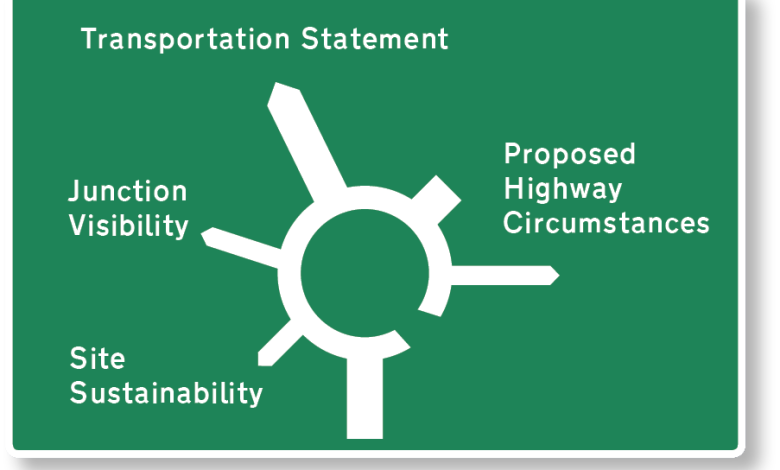Transport Statement: A Vital Tool for Small-Scale Development Planning in the UK

Introduction
As urban areas in the UK continue to expand, and pressure on local transport networks increases, planning authorities have become more stringent in evaluating the traffic implications of new developments. While large projects typically require detailed Transport Assessments (TAs), smaller or less impactful developments often only need a Transport Statement (TS).
A Transport Statement is a concise and focused document that demonstrates how a proposed development will interact with existing transport infrastructure. Although less complex than a Transport Assessment, a TS still plays a crucial role in gaining planning approval.
Consultants like Boston Transport Planning specialise in preparing professional, policy-compliant Transport Statements, offering developers UK-wide support, free initial advice, and cost-effective solutions. This article provides an in-depth look at what a Transport Statement is, when it’s required, its content, and how expert consultants help ensure success.
What is a Transport Statement?
A Transport Statement is a simplified version of a Transport Assessment. It outlines the anticipated transport implications of a proposed development but is generally used when the impact on traffic and transport networks is considered minor.
The aim of a TS is to:
-
Demonstrate that a development is accessible by sustainable modes of transport.
-
Show that any additional traffic can be accommodated safely within the existing road network.
-
Satisfy local planning authority concerns without requiring a full-scale TA.
Unlike informal planning notes, a Transport Statement is a formal, structured document that contributes to the planning process.
When is a Transport Statement Required?
A Transport Statement is typically required for developments that fall below the threshold for a full Transport Assessment. These might include:
-
Residential developments with fewer than 80 dwellings.
-
Small retail units or offices.
-
Minor educational or healthcare expansions.
-
Change-of-use applications.
-
Infill or brownfield developments.
Each local planning authority has its own guidance on thresholds, and requirements may vary depending on site-specific issues such as location, existing congestion, or proximity to sensitive areas like schools or hospitals.
Example Use Cases:
| Development Type | Transport Requirement |
|---|---|
| 50-home residential scheme in suburban area | Transport Statement |
| Conversion of office to residential units | Transport Statement |
| Café in a high street unit | Possibly exempt or require a TS |
| Large supermarket | Full Transport Assessment |
Consultants like Boston Transport Planning can advise whether your project needs a TS or TA, helping avoid unnecessary work and expense.
Key Objectives of a Transport Statement
A Transport Statement should demonstrate that:
-
The development can be accessed safely and efficiently.
-
It aligns with sustainable transport goals (walking, cycling, public transport).
-
There is sufficient parking and servicing provision.
-
The expected traffic will not unduly impact the surrounding highway network.
While less intensive than a TA, a TS must still be based on evidence, analysis, and compliance with relevant planning policies.
Core Components of a Transport Statement
A well-structured Transport Statement typically includes the following sections:
1. Introduction and Scope
-
Description of the site and proposed development.
-
Summary of the purpose of the TS.
2. Policy Review
-
Examination of relevant national and local planning policies.
-
Demonstrates how the development supports sustainable transport objectives.
3. Existing Site Conditions
-
Site location and accessibility.
-
Description of nearby roads, public transport services, pedestrian and cycle facilities.
-
Traffic data (if relevant).
4. Development Proposals
-
Details of the proposed use, size, and layout.
-
Access arrangements (vehicle, pedestrian, and cycle).
-
Proposed car parking and servicing areas.
5. Trip Generation and Impact
-
Estimate of vehicle trips generated using TRICS® data or comparable sites.
-
Assessment of how these trips will impact local roads and junctions.
-
Comparison with existing use (in change-of-use applications).
6. Sustainable Transport Measures
-
Provision for cyclists, pedestrians, and public transport users.
-
Accessibility analysis for non-car users.
7. Mitigation Strategies (If Necessary)
-
Recommendations to address any minor issues, such as:
-
Visibility splays
-
Parking controls
-
Minor access improvements
-
8. Conclusion
-
A concise summary demonstrating that the development can proceed without adverse impact on the transport network.
Role of Transport Statements in the Planning Process
A Transport Statement is a supporting document submitted alongside the planning application. Local planning officers and highway authorities use it to assess:
-
Whether the proposed development fits within existing infrastructure capabilities.
-
If any mitigation is needed.
-
Whether the project aligns with local and national transport policies.
A poorly prepared TS can delay planning decisions or result in refusal. That’s why developers rely on experienced consultants like Boston Transport Planning to deliver robust and policy-compliant statements.
Why Choose Boston Transport Planning?
✅ Specialist Expertise
Boston Transport Planning has extensive experience preparing Transport Statements for a wide range of developments across the UK.
✅ Free Initial Advice
Clients can consult with the team at no cost to understand project requirements and the scope of the TS.
✅ No VAT Charges
Their VAT-free pricing structure makes them ideal for small developers, architects, and landowners.
✅ Fast Turnaround
With a team skilled in traffic planning, mapping, and policy review, Boston Transport Planning can produce Transport Statements on tight deadlines.
✅ UK-Wide Coverage
Whether your project is in London, Manchester, Leeds, or a rural area, Boston Transport Planning can help.
✅ Tailored Support
They work closely with local planning officers and understand the expectations of different authorities, which improves the likelihood of planning success.
Case Studies
🏠 Small Housing Development in East Sussex
A developer needed planning permission for 15 new homes in a semi-rural village. Boston Transport Planning prepared a TS that included a walking distance analysis to nearby bus stops, trip generation estimates, and parking justification. The planning authority approved the application without delay.
🏢 Office-to-Residential Conversion in London Borough
For a change-of-use project converting a small office building into six flats, the Transport Statement focused on reducing car dependency by highlighting excellent public transport links. The TS also addressed bike storage and waste collection access.
National Planning Policy Context
The National Planning Policy Framework (NPPF) emphasizes the need for developments to be sustainable and well-connected by a range of transport modes. A Transport Statement helps demonstrate how a project complies with:
-
NPPF Paragraph 110-113: Promoting sustainable travel and safe access.
-
Manual for Streets: Encouraging walkable and well-designed communities.
-
Local Transport Plans (LTPs): Meeting specific regional transport goals.
By referencing these documents, consultants like Boston Transport Planning ensure your TS is in line with policy expectations.
Transport Statement vs Transport Assessment
| Feature | Transport Statement | Transport Assessment |
|---|---|---|
| Project Size | Small or low-impact | Medium to large-scale |
| Traffic Impact | Minimal | Significant |
| Level of Detail | Basic to moderate | High |
| Policy Analysis | Light review | Comprehensive review |
| Mitigation Measures | Limited | Often extensive |
| Cost | Lower | Higher |
| Typical Use | 10-80 dwellings, change-of-use | Supermarkets, housing estates, business parks |
Boston Transport Planning can help you determine which document is most appropriate—and ensure it meets your specific project needs.
Benefits of a Well-Prepared Transport Statement
| Benefit | Explanation |
|---|---|
| Speeds Up Planning Process | A clear TS satisfies council queries early. |
| Reduces Cost | Avoids unnecessary full TA for low-impact projects. |
| Supports Application Approval | Shows the development is viable and sustainable. |
| Builds Credibility | A professional TS reassures planning officers. |
| Avoids Future Delays | Identifies and addresses minor transport issues before they become objections. |
Final Thoughts
In today’s planning environment, even small developments must prove their impact on the transport network is acceptable. A professionally-prepared Transport Statement is the most efficient way to meet this requirement—offering clarity, compliance, and peace of mind.
Whether you’re developing a small residential site, converting an office, or building a new shop, a well-written TS could be the key to unlocking planning approval.
With deep expertise, free initial consultations, and a cost-effective service, Boston Transport Planning is the ideal partner for producing high-quality Transport Statements that meet local authority expectations across the UK.
Contact Boston Transport Planning
📞 Phone: 0845 163 0114 or 07910 284461
📧 Email: [email protected]
🌐 Website: bostontransportplanning.co.uk
Free Initial Advice | No VAT | UK-Wide Coverage | Fast & Friendly Service










